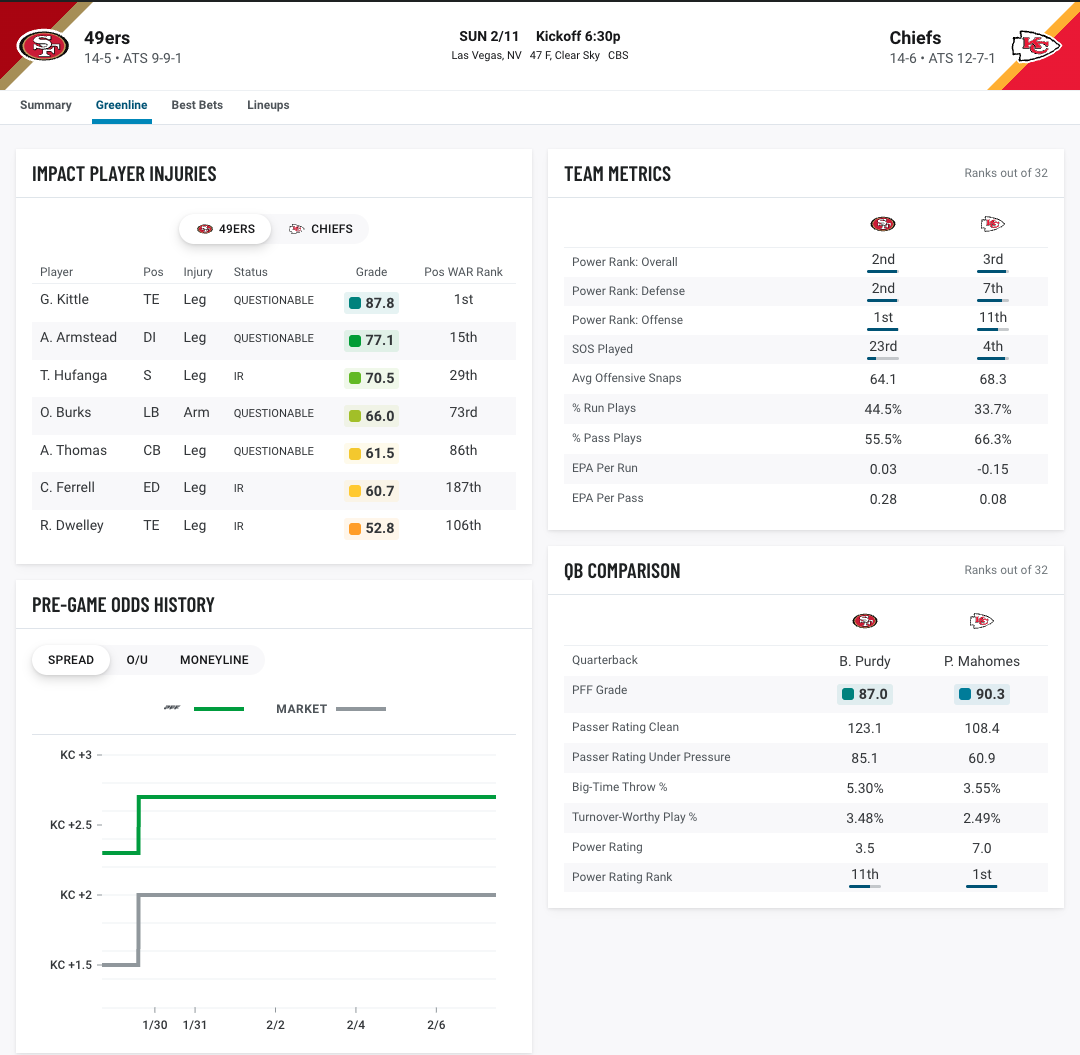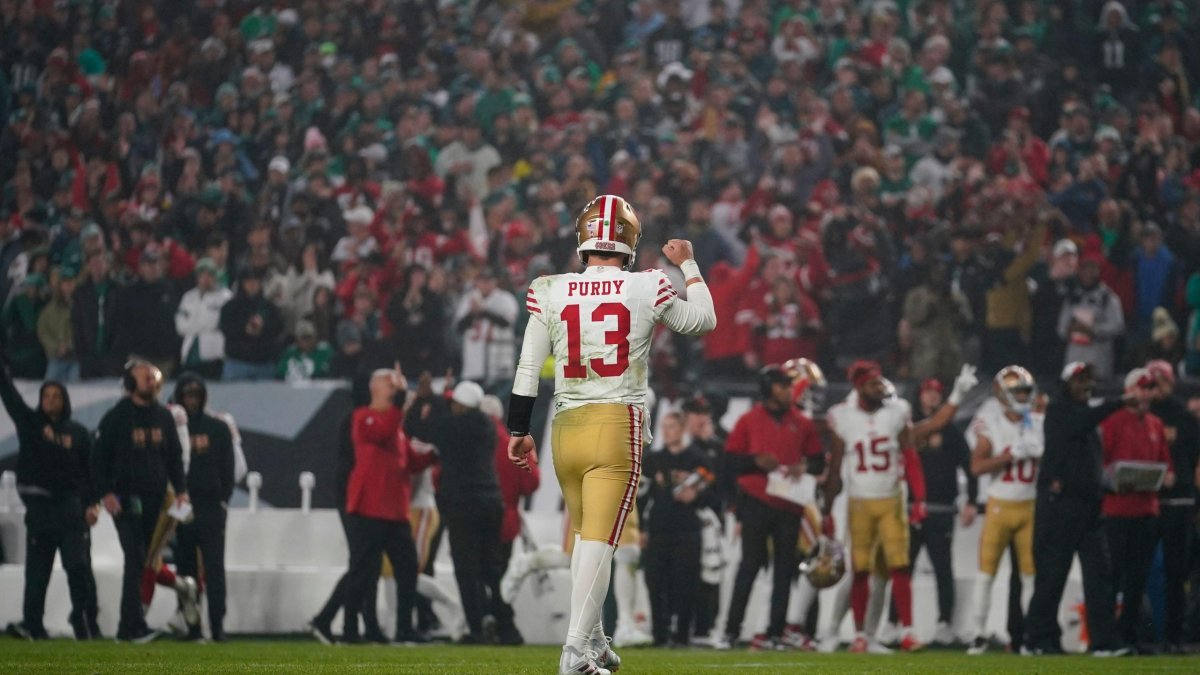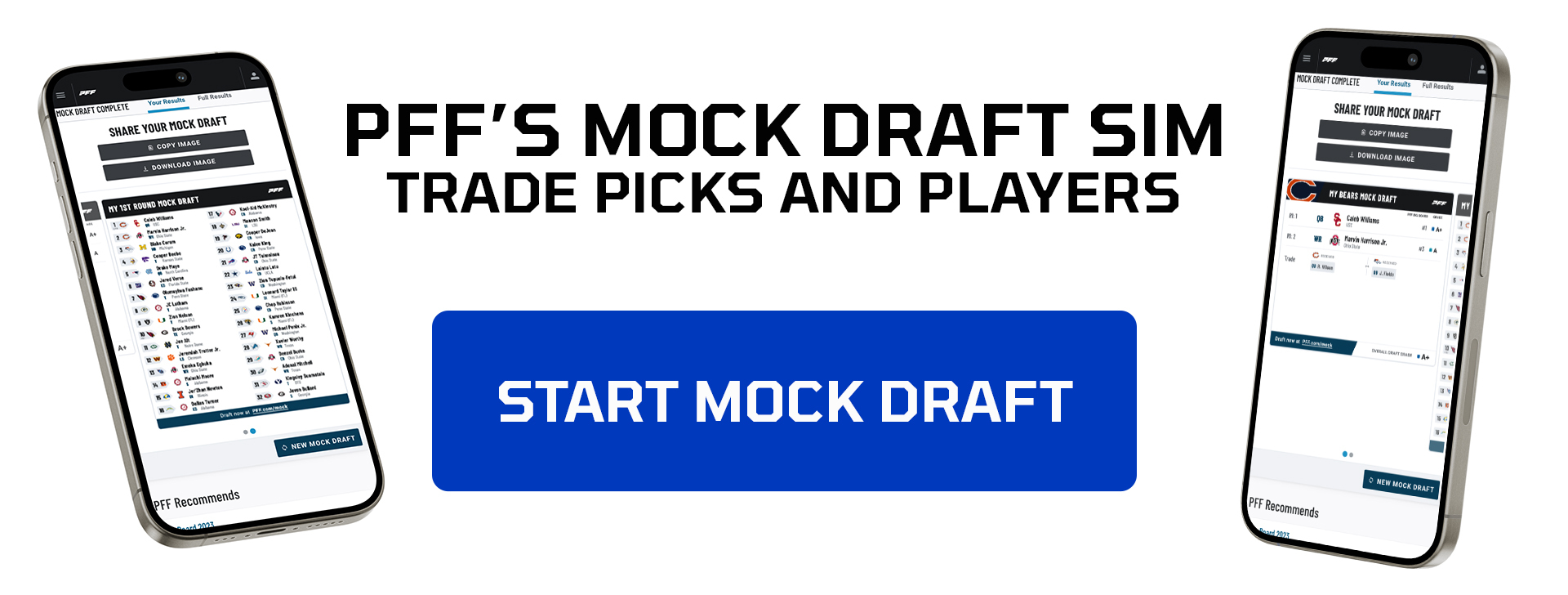• Still one of the best: The 49ers offense remains a stout unit even when they have to play from behind, though they are comparatively not as dominant as they are when they have a lead.
• Room for improvement: If the 49ers fall behind, the team will need Purdy to cut down on some of his mistakes and try to keep in rhythm as often as possible to allow the offense to operate near its maximum potential.
• Dig into the numbers for yourself: PFF's Premium Stats is the most in-depth collection of NFL and NCAA player performance data. Subscribe today to get full access!
Estimated Reading Time: 3 minutes
Much has been made about the San Francisco 49ers‘ ability — or perceived inability — to play from behind this season, but recent results and underlying numbers suggest that the narrative may have gotten out of control.
So, should the Kansas City Chiefs get out to an early lead in Super Bowl 58, is that really the death knell for Kyle Shanahan's squad, or should fans feel comfortable trusting the process and keep backing one of the best offenses in football? Let's dig into the numbers to find out.
How good are the 49ers when they have to play from behind?

• The 49ers have played from behind very infrequently this season. In fact, only the Baltimore Ravens have run fewer plays when trailing by more than one score.
• The 49ers have excelled in his small sample, though, generating the second-most expected points added (EPA) per play and the second-highest success rate when trailing by more than one score.

• Some of the efficiency metrics even suggest that the 49ers are one of the very best offenses in the NFL when they have to claw their way back into games, as they boast the fourth-most EPA per play and third-best success rate on plays when they have a sub-35% win probability.
Leaning on Brock Purdy

• Adjusting for all situations, the 49ers have passed the ball 2% less than expected. But that balance shifts when they start to trail, with the team moving to pass the ball 2% more than expected. When the team falls behind, it leans on quarterback Brock Purdy and the passing game more so than most other situations.
• The Niners quarterback has been up to the task, too, as he is near the very top of the league in EPA per dropbacks and has put up an above-average PFF grade in these situations.
• However, context matters here. It's important to note that while the 49ers have been one of the better teams in the NFL at coming back, they are a far cry from the offense they are when they aren't playing from behind. In non-trailing situations, Purdy leads his peers in PFF grade, and he is 0.15 EPA per play better than the second-place signal-caller.

The results have been there, but there are things to clean up
• Purdy’s scramble rate jumps from 12% to 20% when his team has to play from behind, with his EPA on those scrambles dipping from 0.02 to -0.22 on these plays.
• Part of this can be attributed to Purdy’s inability to avoid sacks, as his pressure-to-sack rate increases from 5% to 13% when trailing as opposed to non-trailing situations.
• And when Purdy does throw, he is much more prone to mistakes. This season, he posted the seventh-lowest turnover-worthy play rate (2.2%) in the NFL when not trailing. That rate ballooned to 7% in trailing situations, the fourth-worst in the NFL.
• The 49ers signal-caller struggles to play within rhythm and perhaps tries to make a bit too much happen. This is backed by the data, where Purdy’s percentage of plays in rhythm drops 60% to 40% when playing in neutral and positive game scripts as opposed to trailing.
Conclusion
• The 49ers offense remains a stout unit even when they have to play from behind, though they are comparatively not as dominant.
• If the 49ers find themselves playing from behind, the team will need Purdy to cut down on some of his mistakes and try to keep in rhythm as often as possible to allow the offense to operate near its maximum potential.




 © 2025 PFF - all rights reserved.
© 2025 PFF - all rights reserved.